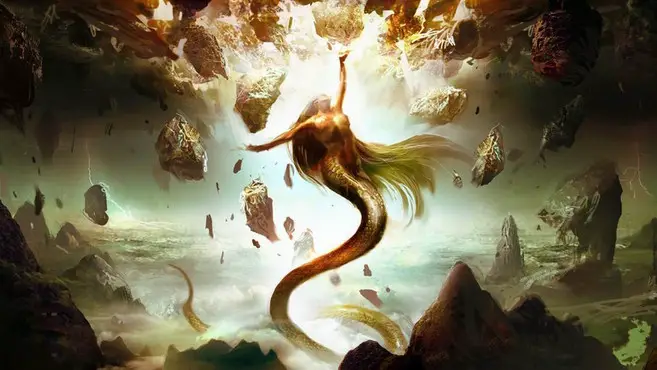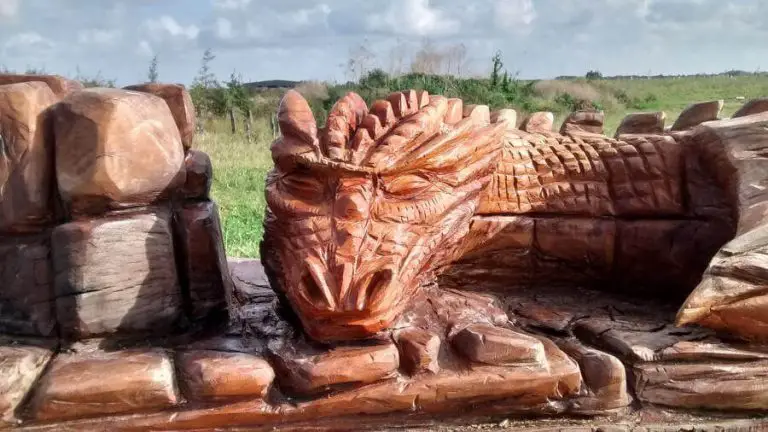Nüwa (女媧), revered as one of the most prominent figures in Chinese mythology, stands as a symbol of creation, harmony, and resilience. She is often celebrated as the mother goddess who shaped humanity and safeguarded the natural order of the world. Nüwa’s enduring legacy spans thousands of years, her tales woven into the fabric of Chinese culture and spirituality.
Her significance is rooted in her dual role as both a creator and a protector. In ancient myths, Nüwa is credited with molding the first humans from clay, breathing life into them and forming the foundation of human society. Beyond her role as the creator of humanity, Nüwa’s heroism shines in the legendary story of her repairing the heavens. In the face of cosmic disaster, she mended the fractured sky with five-colored stones, restoring balance and ensuring the survival of the world.
Through these acts, Nüwa embodies both the nurturing essence of a mother and the fierce determination of a guardian. Her stories emphasize the interconnectedness of creation and protection, highlighting her as a divine figure who nurtures life and upholds cosmic harmony.
The Origins of Nüwa
The name “Nüwa” (女娲) holds deep symbolic significance, reflecting her divine role in Chinese mythology. The character “女” (nǚ) translates to “woman” or “female,” highlighting her feminine nature as a nurturing and creative force. The second character, “媧” (wā), is unique to her and does not have a direct translation, with interpretations ranging from “snail” to “gourd,” both of which are associated with fertility, continuity, and life. Together, her name evokes images of a powerful maternal figure, embodying the essence of creation and life-giving energy.
Mythical Birth and Divine Ancestry
In ancient myths, Nüwa is often described as a being of divine origin, emerging from primordial chaos alongside her brother and counterpart, Fuxi. Some versions of the myth depict her as a serpent-bodied goddess, symbolizing her connection to the natural world and her semi-divine nature. Her upper body is human, while her lower half is a coiled serpent or dragon, reflecting her role as a bridge between heaven and earth.
Some legends describe her as a descendant of the ancient gods, positioning her among the Three Sovereigns, which elevates her status in the pantheon of Chinese deities. This divine lineage underscores her authority as a creator and protector, establishing her as a vital force in the cosmic order.
Although her exact ancestry varies across different accounts, Nüwa is universally recognized as a deity born from the cosmic forces that shaped the world, making her a foundational figure in Chinese cosmology.
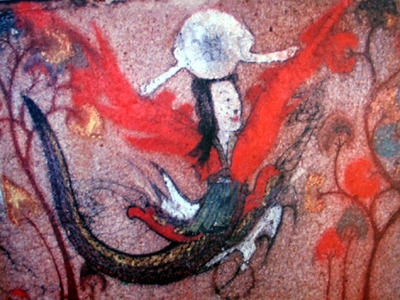
Early Depictions in Ancient Texts and Art
Nüwa first appears in early Chinese texts such as the Classic of Mountains and Seas (Shan Hai Jing) – (Aff.link) and Chu ci.These works portray her as a goddess with immense creative and restorative powers.
Artistic depictions from ancient times, including murals, carvings, and pottery, often show Nüwa with her signature human-serpent form, holding tools like a compass or a gourd, symbolizing her role as a creator and mender of the universe. These visual representations emphasize her dual nature as a divine artisan and a cosmic protector.
Symbolism Associated with Nüwa in Chinese Cosmology
In Chinese cosmology, Nüwa embodies concepts of balance and harmony. She is often associated with the earth and its nurturing qualities, representing fertility and regeneration. Her creation of humanity from clay signifies the deep connection between humans and nature, emphasizing that all life stems from her divine essence.
Additionally, Nüwa’s actions in repairing the heavens after a catastrophe reflect her role as a stabilizing force, ensuring that balance is maintained within the universe. This symbolism reinforces her importance not only as a creator but also as a guardian of harmony in both nature and society.
Nüwa’s Role in Creation Myths
One of the most celebrated myths in Chinese folklore tells of how Nüwa, moved by the desolation of the world, created humanity to bring life and vitality to the earth. In the beginning, the world was vast and empty, devoid of human presence.
Nüwa, longing for companionship and to fill the void, began molding human figures to populate the world. These figures, infused with her divine essence, sprang to life, becoming the first humans. This tale portrays Nüwa as the compassionate mother of humankind, shaping not only their bodies but also their destinies.
According to the legend, Nüwa used yellow clay from the banks of a river to sculpt the first humans. With careful hands, she fashioned their features, giving each figure individuality. To expedite the process, Nüwa later dipped a rope (or a vine) into the mud and flung it across the land, creating simpler human forms wherever the drops of clay fell.
This dual creation process is thought to symbolize the diversity of human society—those intricately molded by hand representing the nobility, while those formed from scattered clay droplets symbolize common folk.
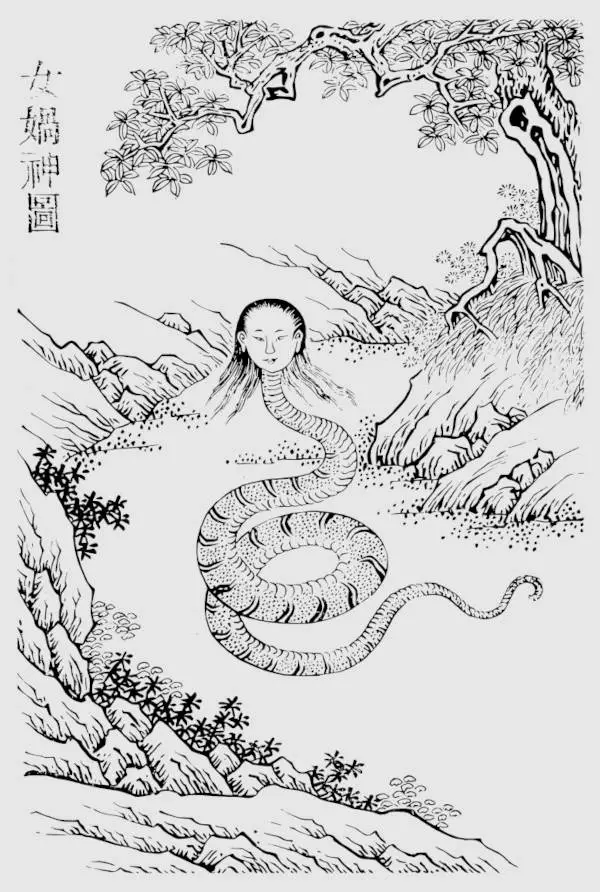
Symbolism of the Yellow Earth in Her Creations
The yellow earth Nüwa used to create humanity holds deep symbolic meaning in Chinese culture. Yellow, often associated with the central direction and the earth element in the Wu Xing (Five Elements) theory, represents stability, balance, and fertility. By using this sacred clay, Nüwa is depicted as grounding humanity in harmony with nature and the cosmos.
Additionally, by shaping humanity from yellow earth, Nüwa not only connected her creations to their terrestrial origins but also emphasized their dependence on nature for sustenance and growth. This connection highlights the belief that humans are intrinsically linked to the earth, embodying both its fragility and resilience
Nüwa’s Heroic Act of Mending the Sky
In ancient Chinese mythology, a great cosmic disaster once shattered the balance of the world. The legend speaks of a fierce battle between the deities Gonggong, the god of water, and Zhuanxu, a heavenly sovereign. In his rage after losing the battle, Gonggong struck one of the great pillars of heaven, causing it to collapse.
This led to chaos as the sky tilted, causing devastating floods and fires that ravaged the land. Humanity was thrown into despair, facing destruction from both natural disasters and fierce beasts that roamed freely.
Amid this calamity, Nüwa rose as the savior of the world. Determined to restore order and protect humanity, she undertook the monumental task of repairing the heavens. With her immense divine power and unyielding determination, she searched the land for the materials needed to mend the sky.
Nüwa melted five-colored stones, a symbol of the harmonious diversity of the cosmos, and used the molten substance to patch the gaping cracks in the firmament. Her tireless efforts brought stability back to the world, ensuring the survival of all living beings.
The five-colored stones used by Nüwa carry rich symbolism in Chinese culture. Each color is thought to represent one of the Wu Xing elements—wood, fire, earth, metal, and water—underscoring the interconnectedness of all things in the universe.
By using these stones, Nüwa restored not only the physical sky but also the cosmic balance between the elements. This act emphasizes her role as a harmonizer, one who bridges the realms of chaos and order, ensuring that life could continue in harmony with the natural world.
Nüwa’s efforts had profound impacts on both nature and humanity. After successfully mending the sky, she also took measures to stop the flooding by using ashes from the reeds she had gathered. This act ensured that life could thrive once again.
Although she restored order, it is said that her repairs were not perfect; the earth remained slightly tilted, which is why rivers in China flow southeastward. Nevertheless, her actions allowed humanity to survive and flourish, solidifying her legacy as a protector and mother figure in Chinese mythology.

Exploring the Bond Between Nüwa and Fuxi
Nüwa (女媧) and Fuxi (伏羲) are deeply intertwined figures in Chinese mythology, often depicted as the earliest divine ancestors of humanity. Their bond is both familial and symbolic, representing the dual forces of creation and governance.
While Nüwa is celebrated for her role as the life-giving creator, Fuxi complements her as a figure of order and wisdom. Together, they embody the balance of yin and yang, nurturing and guiding humanity toward prosperity.
According to various myths, they were born from the goddess Huaxu after she stepped into a giant footprint left by the thunder god, Leigong, marking their divine origins. This shared ancestry establishes them as foundational figures in Chinese culture, where they are celebrated for their contributions to civilization.
Their connection is a reminder of the harmony and cooperation necessary for the flourishing of life.
Their Portrayal as Sibling Deities and Creators
In many traditional narratives, Nüwa and Fuxi are depicted as sibling deities who later became husband and wife. This transition from siblings to partners reflects the evolving nature of their relationship over time. They are often illustrated together in art, with intertwined snake-like tails, symbolizing their unity and interconnectedness.
Their roles as creators are significant; while Nüwa is credited with molding humanity from clay, Fuxi is recognized for establishing social order through marriage customs and family structures. Together, they represent the dual forces of creation—feminine nurturing and masculine structure.
Joint Contributions to Civilization: Teaching Humans Survival Skills
Nüwa and Fuxi are revered not only for their creation of humanity but also for their guidance in teaching humans vital survival skills.
Fuxi, often associated with invention and leadership, is credited with introducing the Chinese people to the use of nets for fishing and trapping animals, ensuring a stable food supply. He is also said to have taught the art of divination using the Eight Trigrams (Bagua), which provided a framework for understanding the natural world and making decisions.
Nüwa, on the other hand, represents nurturing and protection, emphasizing the importance of compassion and community. Together, they equipped early humans with the tools and knowledge needed to thrive, fostering the growth of culture and society.
Their joint efforts symbolize the divine origins of civilization, with Nüwa and Fuxi revered as both creators and benefactors.
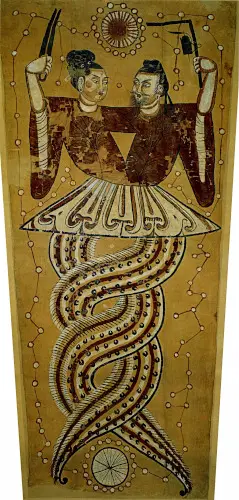
Nüwa in Chinese Folklore and Festivals
Nüwa is still honored through festivals and rituals, particularly in rural areas where her protective and nurturing qualities are highly revered. Ceremonies dedicated to her often include offerings of food, incense, and prayers, asking for her blessings of fertility, protection, and harmony.
In some regions, the second day of the Lunar New Year is believed to be Nüwa’s birthday, and families burn incense and set up altars to honor her. These rituals reflect gratitude for her role in shaping humanity and maintaining cosmic balance.
Additionally, during the Qingming Festival (Tomb-Sweeping Day), families may pay homage to Nüwa by visiting ancestral graves and performing rites that invoke her blessings for future generations.
Regional Variations in the Worship of Nüwa
The worship of Nüwa takes on unique forms in different parts of China, reflecting the rich diversity of regional traditions. In northern China, she is venerated as a fertility goddess, with rituals focused on blessings for healthy crops and large families.
In southern regions, Nüwa is often celebrated as a protector of communities, with local festivals featuring dragon dances and parades symbolizing her connection to the natural world.
Some areas even have temples dedicated to Nüwa, where devotees gather to pray for her guidance and protection. These regional variations highlight the widespread and enduring reverence for Nüwa’s multifaceted role in Chinese mythology and culture.

The Symbolism of Nüwa in Chinese Culture
Representation of Femininity, Nurturing, and Protection: Nüwa is a powerful representation of femininity in Chinese culture, embodying the qualities of nurturing and protection. As the mother goddess, she is often viewed as the ultimate caretaker of humanity, highlighting the importance of maternal instincts and compassion.
Her role in creating humans from clay symbolizes the deep connection between women and the act of creation, reinforcing traditional views of femininity as a source of life and sustenance. Nüwa’s protective nature is evident in her legendary acts, such as mending the sky after a cosmic disaster, showcasing her commitment to safeguarding her creations and maintaining harmony in the world.
Nüwa’s Role as a Symbol of Harmony and Balance: In addition to her nurturing qualities, Nüwa symbolizes harmony and balance within the cosmos. The duality of her relationship with Fuxi represents the interplay between yin and yang—feminine and masculine energies that are essential for maintaining equilibrium in life.
Nüwa’s actions, such as repairing the heavens and creating humanity, reflect her role as a stabilizing force that ensures the continuity of life. This balance is further emphasized by her association with natural elements; she embodies earthiness through her clay creations while also representing celestial aspects through her connection to the heavens.
Nüwa’s Influence on Art, Literature, and Architecture: Nüwa’s influence extends beyond mythology, leaving a lasting impact on Chinese art, literature, and architecture. She is a frequent subject in traditional Chinese paintings, often depicted with her serpent-like lower body and vibrant five-colored stones. These images highlight her divine nature and her role as a creator and restorer.
In literature, Nüwa appears in classical texts and poetry, where her heroic deeds and nurturing qualities are celebrated. Writers have used her story to explore themes of creation, resilience, and cosmic balance.
Architecturally, temples dedicated to Nüwa can be found in various regions of China, each uniquely reflecting local artistic styles. These temples often feature intricate carvings and murals depicting scenes from her myths, serving as a testament to her revered status in Chinese culture. Her influence is also seen in modern art and media, where she continues to inspire contemporary interpretations of her timeless story.
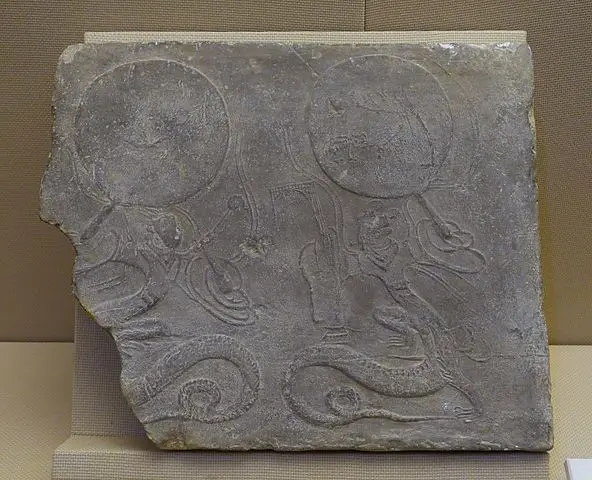
Comparing Nüwa to Other Mother Goddesses
Parallels with Other Creation Deities Around the World
Nüwa shares striking similarities with other mother goddesses from various mythologies, each embodying the role of a life-giver and protector. For instance, in Greek mythology, Gaia is revered as the primordial mother who created the earth and gave birth to the Titans and other gods.
Similarly, in Hindu mythology, the goddess Prithvi represents the earth and is seen as the nurturer of all living beings. Both Nüwa and these goddesses symbolize fertility, creation, and the interconnectedness of life, underscoring their shared role as central figures in their respective cosmologies.
Moreover, like the Egyptian goddess Isis, who restored her husband Osiris and protected their son Horus, Nüwa exhibits both nurturing and restorative qualities. Both goddesses serve as protectors of life and exemplify the enduring strength of feminine divinity in the face of adversity.
Study: “The Comparison of the Image of GoddessinGreek and Chinese Mythology”, by Qinqin Wang and Xiangning Zeng from Guilin University of Technology
Unique Aspects of Nüwa’s Mythology in Comparison
While Nüwa’s role as a creator aligns her with other mother goddesses, her story also has distinctive features. Unlike deities who gave birth to humanity, Nüwa physically molded humans from clay, emphasizing her role as a divine artisan. This hands-on approach highlights a personal connection between Nüwa and her creations, a theme less common in other mythologies.
Additionally, Nüwa’s act of repairing the heavens is a unique and defining element of her mythology. While many mother goddesses focus solely on creation and fertility, Nüwa’s narrative extends to cosmic restoration, positioning her as both a creator and a guardian of universal order. This dual role sets her apart from many other deities, who often specialize in either creation or protection.
Shared Themes of Creation and Preservation
Despite cultural differences, mother goddesses like Nüwa, Gaia, and Isis share common themes of creation and preservation. They embody the cycle of life, bringing forth new existence while ensuring the stability of their worlds. These myths often emphasize the importance of balance and the goddess’s role in maintaining harmony between humanity and nature.
Furthermore, their stories reflect humanity’s deep reverence for the earth and its life-giving properties. Through their tales, these goddesses remind us of the delicate balance required to sustain life and the importance of nurturing and protecting the world for future generations.
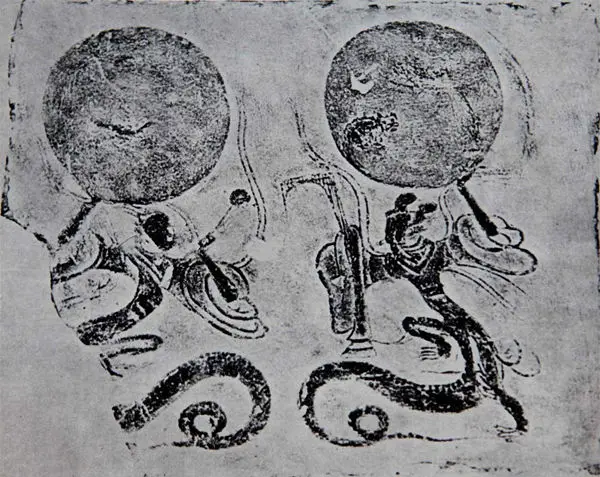
Nüwa’s Legacy in Modern Times
Nüwa remains a significant figure in contemporary Chinese culture, symbolizing creation, protection, and nurturing. As one of the most revered goddesses in Chinese mythology, her stories continue to resonate with people today.
She is often invoked in discussions about femininity and motherhood, embodying the qualities that many aspire to uphold. Nüwa’s legacy is evident in various cultural expressions, from literature to public art, where she is celebrated for her role as a compassionate creator and guardian of humanity.
Depictions in Modern Literature, Film, and Media
In modern literature and media, Nüwa’s character has been reimagined and adapted across various genres. She appears in novels, films, and even animated series that explore her mythological background and significance.
For instance, contemporary authors have woven her into narratives that highlight themes of empowerment and resilience. Films often depict her as a strong female figure who confronts challenges while maintaining her nurturing essence.
These portrayals not only keep her stories alive but also introduce her to new audiences, ensuring that her legacy endures in popular culture.
Nüwa as a Symbol of Environmental Care and Restoration
Nüwa’s actions in repairing the heavens after a cosmic disaster have led to her interpretation as a symbol of environmental care and restoration.
In an age where ecological concerns are paramount, her legacy resonates with modern movements advocating for environmental sustainability. Nüwa’s nurturing role emphasizes the importance of protecting the earth and its resources.
Many contemporary discussions around environmental stewardship draw parallels to her mythological acts of mending and restoring balance, reinforcing the idea that humanity has a responsibility to care for the planet.
Nüwa’s enduring influence highlights not only her significance in ancient mythology but also her relevance in today’s world. As society grapples with issues of gender equality, environmental degradation, and cultural identity, Nüwa stands as a powerful reminder of the values of creation, protection, and harmony.
Related reading: Guanyin: The Goddess Who Listens to the Cries of the World – Opens in new tab
End Words
Nüwa’s place in Chinese mythology is profound and multifaceted, as she embodies the essence of creation, nurturing, and cosmic balance. As the mother goddess who shaped humanity from clay and repaired the heavens, she is not only a symbol of divine power but also a figure of immense compassion and resilience.
Her influence spans across millennia, with her story resonating through generations and adapting to modern themes such as environmental conservation and the celebration of femininity.
Nüwa’s legacy continues to inspire not only in Chinese culture but globally, as her actions of creation and restoration mirror the ongoing efforts to protect and nurture our world. Her image as a protector of both life and nature, as well as her integral role in the balance of the cosmos, ensures that Nüwa remains a timeless symbol of harmony, strength, and the profound connection between humanity and the earth.
Her story will continue to be retold, inspiring future generations to honor the delicate balance of life and to embrace their responsibility as caretakers of the world around them.
Related reading: Guan Gong the Chinese God of War and Wealth – Opens in new tab
Stay in Touch
 Join our newsletter by using the forms on this website or click here!
Join our newsletter by using the forms on this website or click here! Follow us on Google News
Follow us on Google News Follow us on Facebook
Follow us on Facebook
Featured image by Derek Zhao

